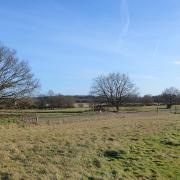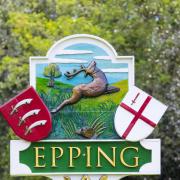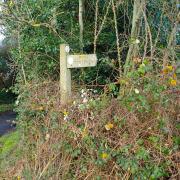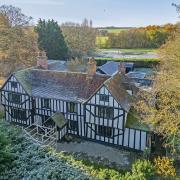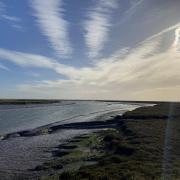Simon Taylor of Essex Field Club introduces us to the weird and wonderful world of land snails
From the fossil record, land snails are known to have evolved from their marine and freshwater forebears at least in the Cretaceous period, approximately 100 million years ago, and possibly much earlier. Like aquatic snails, they form part of the molluscan taxonomic class Gastropoda, the name derived from the Greek for ‘stomach foot’; it’s not just an army that marches on its stomach.
Whereas aquatic snails have gills, land snails have developed a form of lung by dispensing with gills but retaining the body cavity in which they were housed and vastly increasing its blood supply. Incidentally, snail blood carries oxygen by means of the copper-based molecule haemocyanin, rather than the iron-based haemoglobin found in vertebrates, and tends to have a bluish tinge rather than red.
By definition, snails have a shell (those which have evolved the loss of the shell are slugs). The shell nearly always coils dextrally, i.e. when you look down on the spiral it coils to the right (clockwise). A few types of snail have evolved to coil in the opposite direction, termed sinistral. Very occasionally, one can find a dextral snail that has mutated to become sinistral, often quoted as a one in 100,000 chance.
There are around 100 different species of land snail known in Britain, over three-quarters of which are found in Essex. Most readers will be familiar with the brown garden snail Cornu aspersum, which can be over an inch in diameter and conspicuous in gardens and many wild habitats. It has what most consider the typical globularly-coiled snail shell, as do the two common species of banded snail - Cepaea hortensis and Cepaea nemoralis – again well-known from gardens and other semi-urban habitats and noted for the wide variety of shell patterns they can exhibit (from five-banded through to unbanded, and on a variety of base colours).
There are a few populations of the now rare and protected Roman snail Helix pomatia in Essex. It is the UK’s largest wild land snail and is thought to have been introduced by the Romans as food; it and various other snails (including Cornu aspersum) are a significant human food resource in many European countries.
Ironically, one of the commonest snails in Essex is the so-called Kentish snail, Monacha cantiana. It resembles a Cepaea but is slightly smaller, thinner-shelled and always buff-coloured turning pinkish near the mouth (aperture) of the shell. Like some other snails, young Kentish snails have hairy shells!
Snails come in a surprising variety of shapes, from the very elongate Door snails (Clausiliidae – which are also all sinistral) to the very flattened, discoidal types such as the attractive woodland snail Discus rotundatus and the Garlic snail, Oxychilus alliarius, so-called because it does indeed smell strongly of garlic.
The shells are made of calcium carbonate, the same chemical as limestone, hence many snails favour limey habitats. Different species can also exhibit preference for, say, woodland or grassland, damp or dry habitat, cooler or warmer climate, etc.
As the shells are also relatively robust, they are often found in archaeological contexts and have been used extensively both as indicators of ancient habitats and as potential date markers, particularly for species known to have colonised or been introduced to Britain at specific dates.
Find out more at essexfieldclub.org.uk











